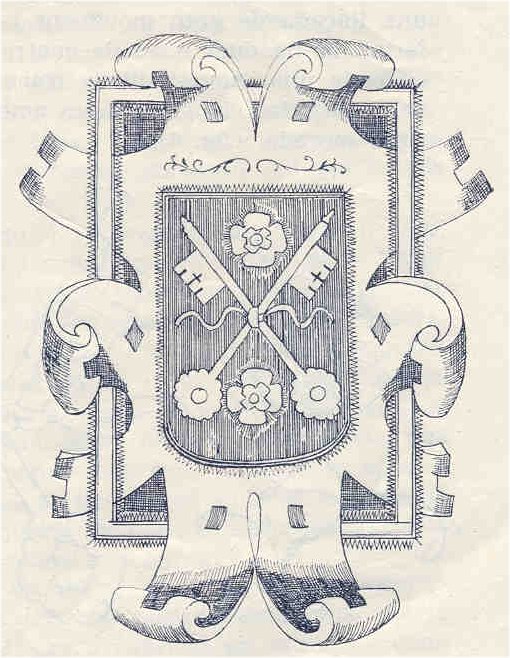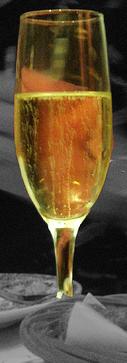|
Domènec Soberano
Domènec Soberano i Mestres (1825, Reus - 1909, Reus) was a Catalan wine merchant who was also an amateur painter and art teacher. Biography Thanks to an improvement his father invented for the process of making sparkling wine, he was able to travel throughout Europe. In 1866, he converted the family business from a wine warehouse to the production of "Champagne de Reus", under the name Soberano & Cia. In 1867, he presented his Cava wine at the Exposition Universelle in Paris. During his trips, he developed an interest in painting techniques and discovered watercolors, which were little known in Catalonia at the time. He was largely self-taught, and always considered himself to be an amateur.C. Gonzalez i López, ''Homenatge a 20 artistes reusencs nats al segle XIX'', Banco de Bilbao, 1981 He opened a drawing school in Reus, which he operated until 1888. He was a friend of Marià Fortuny Baró and Antoni Marsal, the grandfather and uncle, respectively, of Marià Fortuny. Sob ... [...More Info...] [...Related Items...] OR: [Wikipedia] [Google] [Baidu] |
Reus
Reus () is the capital of Baix Camp, in Camp de Tarragona, Catalonia, Spain. The area has long been an important producer of wines and spirits, and gained continental significance during the time of the Phylloxera plague. Currently it is known for its commercial activity, as a center for rock climbing, and as the birthplace of architect Antoni Gaudí. Name The origin of the name ''Reus'' is a subject of debate. One of the theories is that Reus comes from the Latin word used to describe convict prisoners (''reus''), and as such, it would be a Roman penitentiary. Currently, the most accepted theory is that the name has Celtic languages, Celtic roots, from the root ''red'' that originated the name ''redis'' (or ''reddis''), that approximately meaning 'place on the way' or 'crossroads settlement', or said alternatively, an inhabited place in a cross-road. History Foundation and early history Around 1150 Robert d'Aguiló repopulated the region of Reus, after receiving it on 3 Ju ... [...More Info...] [...Related Items...] OR: [Wikipedia] [Google] [Baidu] |
Catalan People
Catalans (Catalan language, Catalan, French language, French and Occitan language, Occitan: ''catalans''; ; ; or ) are a Romance languages, Romance ethnic group native to Catalonia, who speak Catalan language, Catalan. The current official category of "Catalans" is that of the citizens of Catalonia, a Nationalities and regions of Spain, nationality and autonomous communities of Spain, autonomous community in Spain and the inhabitants of the Roussillon historical region in southern France, today the Pyrénées Orientales department, also called Northern Catalonia and ''Pays Catalan'' in French. Some authors also extend the word "Catalans" to include all people from Catalan Countries, areas in which Catalan is spoken, namely those from Andorra, Valencian Community, Valencia, the Balearic Islands, la Franja, eastern Aragon, Roussillon, and the city of Alghero in Sardinia. The Catalan government regularly surveys its population regarding its "sentiment of belonging". As of July ... [...More Info...] [...Related Items...] OR: [Wikipedia] [Google] [Baidu] |
Sparkling Wine
Sparkling wine is a wine with significant levels of carbon dioxide in it, making it fizzy. While it is common to refer to this as champagne, European Union countries legally reserve that word for products exclusively produced in the Champagne (wine region), Champagne region of France. Sparkling wine is usually either white or rosé, but there are examples of red sparkling wines such as the Italian wine, Italian Brachetto, Bonarda and Lambrusco, and the Australian wine, Australian sparkling Shiraz grape, Shiraz. The Sweetness of wine, sweetness of sparkling wine can range from very dry ''brut'' styles to sweeter ''doux'' varieties (French for 'hard' and 'soft', respectively).J. Robinson (ed) ''"The Oxford Companion to Wine"'' Third Edition pp 656–660, Oxford University Press 2006 . The sparkling quality of these wines comes from its carbon dioxide content and may be the result of natural Fermentation in winemaking, fermentation, either in a bottle, as with the Champagne Method, ... [...More Info...] [...Related Items...] OR: [Wikipedia] [Google] [Baidu] |
Cava (Spanish Wine)
Cava (, ; , ) is a sparkling wine of ''denominación de origen'' (DO) status from Spain. It may be White wine, white (''blanco'') or rosé (''rosado''). The Macabeo, Parellada and Xarel·lo are the most popular and traditional grape varieties for producing cava. Chardonnay and Malvasia are also permitted. Authorized red grapes are Garnacha tinta, Monastrell, Trepat, and Pinot Noir. Only wines produced in the Sparkling wine production, traditional method may be labelled "cava"; those produced by other processes may only be called "sparkling wines" (''vinos espumosos''). About 95% of all cava is produced in the Penedès (DO), Penedès area in Catalonia, Spain, with the village of Sant Sadurní d'Anoia being home to many of the largest Catalan production houses. The two major producers are Codorníu Winery, Codorníu and Freixenet. Cava is also produced in other villages in the provinces of Province of Girona, Girona, Province of Lleida, Lleida, Province of Tarragona, Tarragona, and ... [...More Info...] [...Related Items...] OR: [Wikipedia] [Google] [Baidu] |
Exposition Universelle (1867)
The of 1867 (), better known in English as the 1867 Paris Exposition, was a world's fair held in Paris, Second French Empire, France, from 1 April to 3 November 1867. It was the List of world expositions, second of ten major expositions held in the city between 1855 and 1937. A number of nations were represented at the fair. Following a decree of Napoleon III of France, Emperor Napoleon III, the exposition was prepared as early as 1864, in the midst of Haussmann's renovation of Paris, the renovation of Paris, marking the culmination of the Second French Empire. Visitors included Tsar Alexander II of Russia, a brother of the William I, German Emperor, King William and Otto von Bismarck of Prussia, Prince Metternich and Franz Josef of Austria, Ottoman Sultan Abdülaziz, and the Khedive of Egypt Isma'il Pasha, Isma'il. Conception In 1864, Napoleon III of France, Napoleon III issued a decree stating that an international exposition should be held in Paris in 1867. A Government a ... [...More Info...] [...Related Items...] OR: [Wikipedia] [Google] [Baidu] |
Watercolor
Watercolor (American English) or watercolour (Commonwealth English; see American and British English spelling differences#-our, -or, spelling differences), also ''aquarelle'' (; from Italian diminutive of Latin 'water'), is a painting method"Watercolor may be as old as art itself, going back to the Stone Age when early ancestors combined earth and charcoal with water to create the first wet-on-dry picture on a cave wall." in which the paints are made of pigments suspended in a water-based solution. ''Watercolor'' refers to both the List of art media, medium and the resulting work of art, artwork. Aquarelles painted with water-soluble colored ink instead of modern water colors are called (Latin for "aquarelle made with ink") by experts. However, this term has now tended to pass out of use. The conventional and most common Support (art), support—material to which the paint is applied—for watercolor paintings is watercolor paper. Other supports or substrates include stone ... [...More Info...] [...Related Items...] OR: [Wikipedia] [Google] [Baidu] |
Marià Fortuny
Mariano Fortuny y Marsal (June 11, 1838 – November 21, 1874) was a Spanish painter known for works focusing on Romantic fascination with Orientalist themes, historicist genre painting and military painting of Spanish imperial expansion. Biography He was born in Reus, near Tarragona, Catalonia. His father died when he was an infant, and his mother by the time he was 12. Thus, Mariano was raised by his grandfather, a cabinet-maker who taught him to make wax figurines. At the age of 9, at a public competition in his town, a local painter, teacher and patron, Domènec Soberano, encouraged further study. At the age of 14 he moved to Barcelona with his grandfather. The sculptor Domènec Talarn secured him a pension allowing him to attend the ''Escola Provincial de Belles Arts'' (the '' Escola de la Llotja''). There he studied for four years under Claudi Lorenzale and Pau Milà i Fontanals, and in March 1857 he gained a scholarship that entitled him to two years of studies i ... [...More Info...] [...Related Items...] OR: [Wikipedia] [Google] [Baidu] |
Baldomer Galofre
Baldomer Galofre i Giménez, in Spanish: Baldomero Galofré y Jiménez (25 May 1845 – 26 July 1902) was a Spanish painter. Biography Galofre was born in Reus. His first art lessons were in the workshop of the amateur painter and wine merchant, Domènec Soberano, when he was still quite young. Shortly after, his family moved to Barcelona, where he was enrolled at the Escola de la Llotja and studied with Ramon Martí Alsina.Gran Enciclopèdia Catalana Brief biography He later moved to Madrid to continue his studies. His first exhibition was at the "Exposició de Belles Arts del 1866" in Barcelona, where he presented his work "Els traginers" (The Porters). He later participated in the Barcelona exhibitions of 1870 and 1872, as well as one in |
Josep Tapiró Baró
Josep Tapiró i Baró (17 February 1836, Reus – 4 October 1913, Tangier) was a Spanish painter, best known for his watercolor portraits from Morocco. Biography His parents owned a hardware store. As with many future artists, he displayed an early affinity for drawing. His first formal studies were in 1849 with Domènec Soberano, a local wine merchant and amateur painter.Brief biography @ the . In 1853, he and his fellow student, Marià Fortuny, were given the opportunity to exhibit at a showing held by the Casino de Reus. Later that yea ... [...More Info...] [...Related Items...] OR: [Wikipedia] [Google] [Baidu] |
Still-life
A still life (: still lifes) is a work of art depicting mostly inanimate subject matter, typically commonplace objects which are either natural (food, flowers, dead animals, plants, rocks, shells, etc.) or human-made (drinking glasses, books, vases, jewelry, coins, pipes, etc.). With origins in the Middle Ages and Ancient Greco-Roman art, still-life painting emerged as a distinct genre and professional specialization in Western painting by the late 16th century, and has remained significant since then. One advantage of the still-life artform is that it allows an artist much freedom to experiment with the arrangement of elements within a composition of a painting. Still life, as a particular genre, began with Netherlandish painting of the 16th and 17th centuries, and the English term ''still life'' derives from the Dutch word ''stilleven''. Early still-life paintings, particularly before 1700, often contained religious and allegorical symbolism relating to the objects depict ... [...More Info...] [...Related Items...] OR: [Wikipedia] [Google] [Baidu] |





